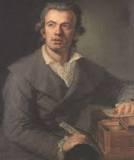Planning worship?
Check out our sister site, ZeteoSearch.org,
for 20+ additional resources related to your search.
- |
User Links
Person Results
Heinrich Theobald Schenk
1656 - 1727 Person Name: H. J. Schenk Author of "Wer sind die vor Gottes Throne?" in Gesangbuch mit Noten Schenk, Heinrich Theobald, son of Simon Schenk, pastor at Heidelbach, on the Schwalm, near Alsfeld, Hesse, was born at Heidelbach, April 10, 1656. He entered the Padagogium at Giessen, in 1670, and then pursued his studies at the University (M.A. 1676). In 1676 he returned to the Padagogium, as one of the masters; and was, from 1677 to 1689, "præceptor classicus." On Dec. 27, 1689, he was ordained as Town preacher and "definitor," at the Stadtkirche in Giessen. He died at Giessen, April 11, and was buried there April 15, 1727…The registers at Giessen give the date of his funeral, but not of his death; but say, that at his death he was aged 71 years less 10 days, which would rather suggest April 21 as the date of his birth.) Only one hymn is known by him, but it is a hymn which is found in almost all recent German hymn-books; and, through translations, in many recent English collections. It is:—
Wer sind die vor Gottes Throne. Eternal Life. This is found in the Neuvennehrtes Gesangbilchlein, Frankfurt-am-Main, 1719, No. 362, p. 341… It is a beautiful hymn on the Church Triumphant (i.-xiii.), and on the aspirations of the Church Militant to attain the same victorious glory. Translated as:—
1. Who are these like stars appearing. By Miss Cox, in her Sacred Hymns from the German, 1841, p. 89, being a very good translation of st. i.—vi., ix.-xi., xiv.-xvii., xx. This has come into extensive use in the cento adopted in Alford's Psalms & Hymns, 1844; and repeated in Hymns Ancient & Modern, 1861; being the trs. of st. i., iii.-v., ix. Other centos are found in Rorison's Hymns & Anthems, 1851, &c. Other forms may also be noted:—
(1) "Lo! a multitude appearing." This, in T. Darling's Hymns for Ch. of England, 1874, is based on Miss Cox's st. i., iv., v., with two additional stanzas.
(2) "Who are these in dazzling brightness. Bearing the victorious palm."
2. Who are these in light adoring. By A. T. Russell, as No. 145 in his Psalms & Hymns, 1851 ; being a tr. of st. i., iv., xi., xv.
3. Who are those before God's throne, What the crowned host I see. This is a good tr. of st. i.-vi., ix., x., xiv., xvii., xx., by Miss Winkworth in herLyra Germanica, 1st Ser., 1855, p. 207
Other translations are:—
(1) "Who are those before God's throne, What the countless." By J. D. Burns, in the Family Treasury, 1859, pt. i., p. 307; and his Memoir & Remains, 1869, p. 267. (2) " Who are those round God's throne stand-ing." By Miss Manington, 1863, p. 90. (3) "What is this host that round the throne." By Miss Warner, 1869, p. 20. [Rev. James Mearns, M.A.]
--Excerpts from John Julian, Dictionary of Hymnology (1907)
Heinrich Theobald Schenk
Johann G. Naumann

1741 - 1801 Person Name: J. A. Raumann Composer of "[Wer sind, die vor Gottes Throne]" in Evangelisches Gesangbuch mit vierstimmigen Melodien Johann Gottlieb Naumann; b. near Dresden, 1741; d. Dresden, 1801
Evangelical Lutheran Hymnal, 1908
==========================
Born: April 7, 1741, Blasewitz, Dresden, Germany.
Died: October 23, 1801, Dresden, Germany.
Buried: Eliasfriedhof, Dresden, Germany.
Naumann received his musical training in his town school, where he learned piano and organ. Later, he studied at the Kreuzschule in Dresden and was a member of the Dresden Kreuzchor. In Dresden, he learned from the organist and cantor of the Kreuzschule, Gottfried August Homilius, a student of Bach. In May 1757, he traveled to Italy with Swedish violinist Anders Wesström. Composer Giuseppe Tartini encountered Naumann in 1762 and took an interest in his work. Later that year, Naumann made his debut as an opera composer in Venice with Il Tesoro Insidiato. After his successful 1764 production of Li Creduti Spiriti, he was engaged as the second church composer at the Dresden court, on the recommendation of composer Johann Adolf Hasse.
In 1777, as a result of negotiations by Swedish diplomat Count Löwenhjelm, Naumann was appointed to reform the Stockholm Hovkapell and help King Gustavus III in his opera plans. His work in Sweden led to the 1782 production of his opera Cora och Alonzo at the inauguration of the new opera house in Stockholm, and the 1786 production of Gustaf Wasa, based on an idea of the king for a Royal Swedish Opera. After a period as guest composer in Copenhagen (1785-56), he returned to Dresden, where he became Oberkapellmeister.
In 1792, Naumann married Catarina von Grodtschilling, daughter of a Danish vice-admiral. His grandson was composer Ernst Naumann (1832–1910).
http://www.hymntime.com/tch/bio/n/a/u/naumann_jg.htm
==============================
http://en.wikipedia.org/wiki/Johann_Gottlieb_Naumann
Johann G. Naumann


 My Starred Hymns
My Starred Hymns


